What are you doing to control what “they say” about you?
When it comes to branding your organization, “It’s not what you say, it’s what THEY say it is.”
– Marty Neumeier
Are you taking every opportunity to consistently and clearly convey your brand?
When it comes to branding, perception is everything. As a small business owner or nonprofit, what are you doing to control what “they say“ about you?
The best way to control how others see you is by giving your clients the same experience every time they interact with your organization, no matter how big or small that interaction might be. Whether they see you in person, talk to you over the phone, or receive something in the mail, what are you doing to make sure the recipient is getting a clear and consistent message about who you are, what your organization does, and why they should care?
Here are some practical first steps you can take to get started. First, you need to be crystal clear about what your organization does. Develop a solid mission and vision statement and make sure it’s clearly articulated. Learn about your audience, who they are, where they live, and what problems they are experiencing. Developing this information will take time and requires a step-by-step process. It’s worth the time you’ll invest, as it will help to lay the foundation for what’s to come and make the process much easier in the long run. Once you have clarity, it’s time for the graphics. This includes your logo, website, and any other marketing materials you’ll need.
Once your foundation work is complete, it’s time to get organized! Collect all the information you have about your organization’s brand, such as your logo, business card, marketing materials, key messages, etc., and lay them out on a table. Seeing them all together can be a very enlightening experience. Do all these items look like they came from the same organization? Do they have the same look and feel? Do they fall into a defined color palette? Are all the messages on target with your mission and vision of your organization? Most of the time, the answer to these questions will be a surprising ”No.” Doing this exercise serves as a branding audit and will give you a clearer picture of where you need to focus your efforts. This is an extremely worthwhile process, and it’s always easier to spend the time up front instead of doing damage control later on.
This is where the tough decisions come in. With the help of an assigned committee or a branding professional, your organization can set some branding guidelines. This is much more than just your logo colors! These guidelines will dictate how the outside world will perceive you. When you are consistent, you build an image of trust and stability. Defining these parameters and organizing them into one central book will make it easier for everyone to find and follow them. This book will serve as your Branding Handbook.
This is not something expensive or fancy that you need to create. It can be as simple as a three-ring binder or electronic folder hosted on a shared server for those who work remotely. You probably have some of these items already and can easily organize them with a small investment of time. So, what should be in your Branding Handbook? It’s really up to you. You can take this as far and make it as detailed as you want, but the point is to get started. Here are a few examples of what should be included:
- Mission statement
- Vision statement
- Main talking points
- Audience profile(s)
- Examples of how your logo should look in color, black & white, in print, and online.
- Color palette
- Business-card examples
- Marketing material examples
- Email signature example
The list can go on. Add whatever other categories that might apply to your organization. This is a living, breathing book that will serve as a reference to all your employees and volunteers. Old and new employees should be aware of these guidelines, and going over them should be part of their onboarding training. It doesn’t hurt to assign an employee or volunteer to be the “branding police” and keep an eye out for consistency so that your book stays up to date with examples.
It’s time to raise the bar and take control of your brand and how it’s perceived. These little changes can make a big difference with minuscule investment. It will save you time because you’ll always know how to answer the phone and where to look for that logo, program description, color palette, etc. You can also send staff and volunteers right to it, so you aren’t constantly forwarding files, saving even more of your precious time! I would love to hear what you are doing to brand your organization. Drop me a note at alizah@epsteincreative.com to set up a free 30-minute consultation.
 Alizah Epstein
Alizah Epstein
Founder and Chief Creative Officer
Epstein Creative | Branding and marketing design studio
www.epsteincreative.com
